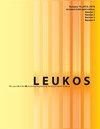夜间间歇性强光的视觉舒适和急性警觉性效应
IF 2.6
2区 工程技术
Q2 CONSTRUCTION & BUILDING TECHNOLOGY
引用次数: 2
摘要
夜间间歇性强光已被证明能够产生昼夜节律相移效应,抑制褪黑激素并诱导警觉性,但对日间间歇性强光的影响却很少关注。在一个晚上的睡眠限制之后,40名参与者在一个平衡的受试者设计中暴露在间歇性(100勒克斯- 1000勒克斯)、连续昏暗(100勒克斯)和连续明亮(1000勒克斯)条件下,每次持续90分钟。在每种光线条件下,反复评估自我报告的困倦、认知表现、生理唤醒以及主观视觉舒适度。结果表明,与警觉性相关的参数不受光照条件的显著影响:与昏暗条件相比,间歇条件和明亮条件都没有提高警觉性。在昏暗条件下视觉舒适度最高,其次是间歇和明亮条件,尽管在间歇条件下明亮阶段视觉舒适度明显下降。这些结果说明了这些视觉体验和神经行为反应背后机制的多样性。本文章由计算机程序翻译,如有差异,请以英文原文为准。
Visual Comfort and Acute Alerting Effects of Diurnal Intermittent Bright Light
ABSTRACT Intermittent bright light during the night has shown to be able to generate circadian phase-shifting effects, suppress melatonin and induce alertness, but little attention has been devoted to the effects of diurnal intermittent bright light. Following a night of sleep restriction, forty participants were exposed in a counterbalanced within-subject design to an intermittent (100 lux – 1000 lux), a continuous dim (100 lux) and a continuous bright light condition (1000 lux) each lasting 90 min. Repeated assessments of self-reported sleepiness, cognitive performance and physiological arousal as well as subjective visual comfort were taken during each light condition. Results showed that alertness-related parameters were not significantly affected by the light conditions: neither the intermittent nor the bright condition improved alertness compared to the dim condition. Visual comfort was highest in the dim condition, followed by the intermittent and bright conditions respectively, even though the visualizations showed marked decreases in visual comfort during the bright light phases in the intermittent condition. The results illustrate the diversity in mechanisms underlying these visual experiences and neurobehavioral responses.
求助全文
通过发布文献求助,成功后即可免费获取论文全文。
去求助
来源期刊

Leukos
工程技术-光学
CiteScore
7.60
自引率
5.60%
发文量
19
审稿时长
>12 weeks
期刊介绍:
The Illuminating Engineering Society of North America and our publisher Taylor & Francis make every effort to ensure the accuracy of all the information (the "Content") contained in our publications. However, The Illuminating Engineering Society of North America and our publisher Taylor & Francis, our agents, and our licensors make no representations or warranties whatsoever as to the accuracy, completeness, or suitability for any purpose of the Content. Any opinions and views expressed in this publication are the opinions and views of the authors, and are not the views of or endorsed by The Illuminating Engineering Society of North America and our publisher Taylor & Francis. The accuracy of the Content should not be relied upon and should be independently verified with primary sources of information. The Illuminating Engineering Society of North America and our publisher Taylor & Francis shall not be liable for any losses, actions, claims, proceedings, demands, costs, expenses, damages, and other liabilities whatsoever or howsoever caused arising directly or indirectly in connection with, in relation to, or arising out of the use of the Content. Terms & Conditions of access and use can be found at http://www.tandfonline.com/page/terms-and-conditions .
 求助内容:
求助内容: 应助结果提醒方式:
应助结果提醒方式:


